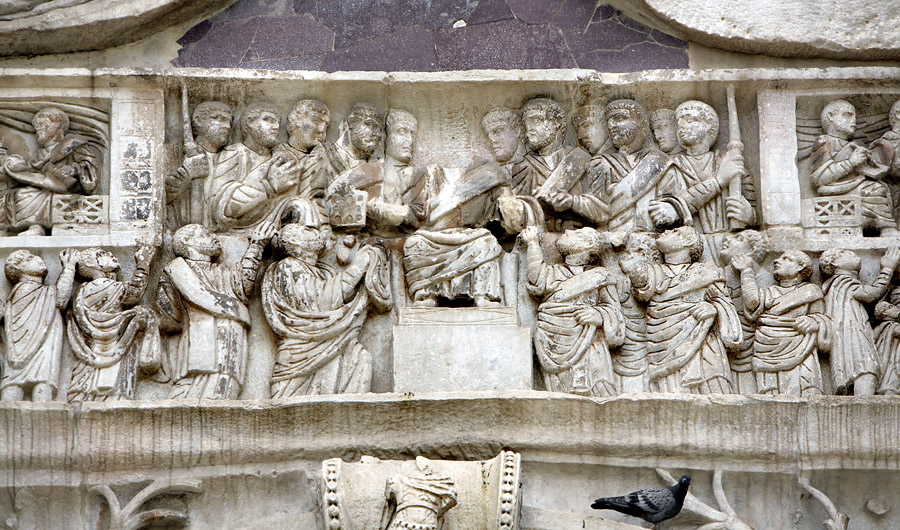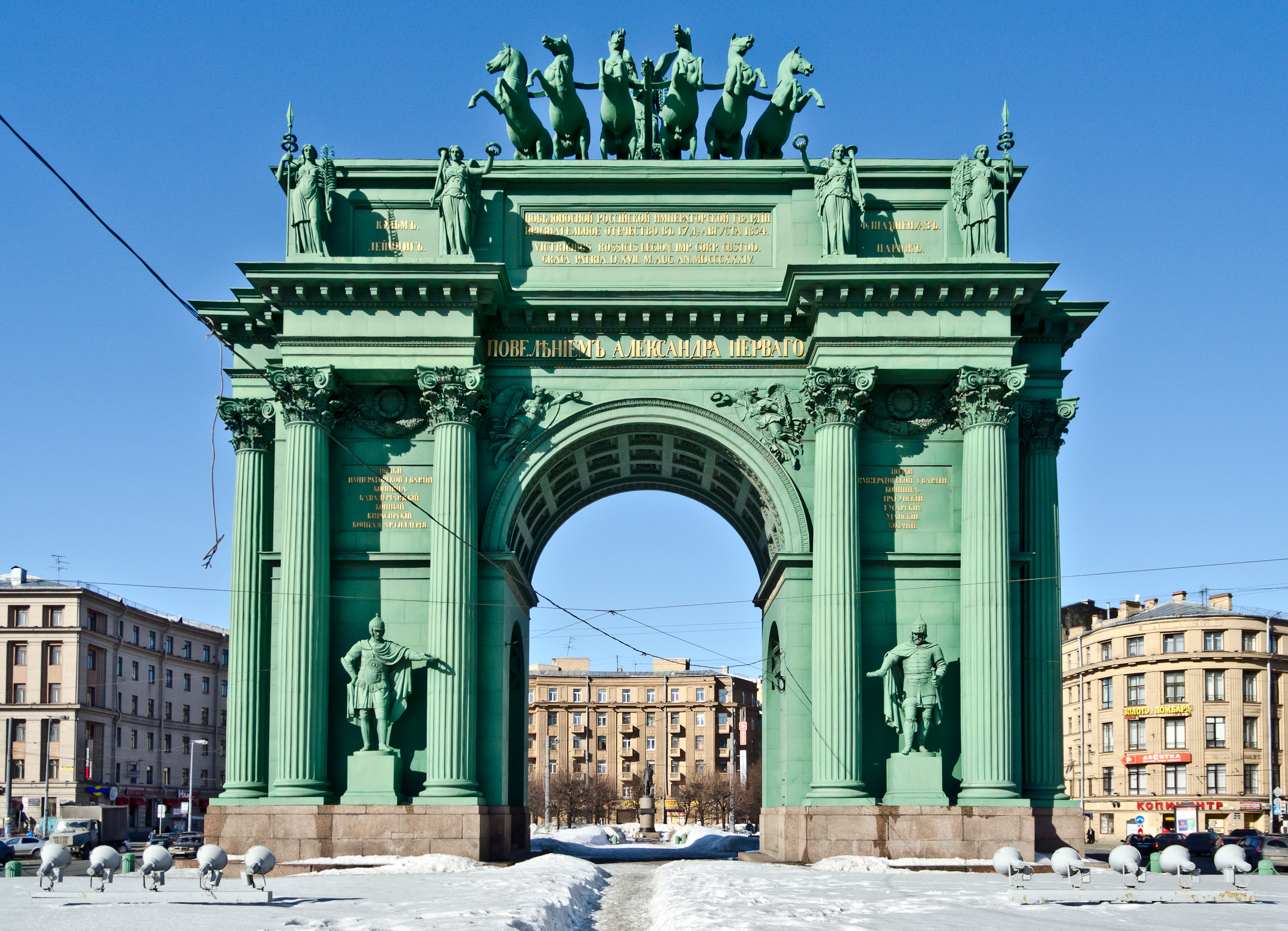Triumphal arches
Enlarge text Shrink textA triumphal arch is a free-standing monumental structure in the shape of an archway with one or more arched passageways, often designed to span a road, and usually standing alone, unconnected to other buildings. In its simplest form, a triumphal arch consists of two massive piers connected by an arch, typically crowned with a flat entablature or attic on which a statue might be mounted or which bears commemorative inscriptions. The main structure is often decorated with carvings, sculpted reliefs, and dedications. More elaborate triumphal arches may have multiple archways, or in a tetrapylon, passages leading in four directions. Triumphal arches are one of the most influential and distinctive types of ancient Roman architecture. Effectively invented by the Romans, and using their skill in making arches and vaults, the Roman triumphal arch was used to commemorate victorious generals or significant public events such as the founding of new colonies, the construction of a road or bridge, the death of a member of the imperial family or the accession of a new emperor. Archaeologists like to distinguish between a true "triumphal arch", built to celebrate an actual Roman triumph, a grand procession declared by the Roman Senate following military victory, a "memorial arch" arch or "honourary arch", essentially built by emperors to celebrate themselves, and arches, typically in city walls, that are merely grand gateways. But the groups are often conflated. Often actual Roman triumphal arches were initially in wood and other rather temporary materials, only later replaced by one in stone; the majority of ancient survivals are actually from the other two groups. The survival of great Roman triumphal arches such as the Arch of Titus or the Arch of Constantine has inspired many post-Roman states and rulers, up to the present day, to erect their own triumphal arches in emulation of the Romans. Triumphal arches in the Roman style have been built in many cities around the world, including the Arc de Triomphe in Paris, the Narva Triumphal Arch in Saint Petersburg, or Marble Arch and the Wellington Arch in London. After about 1820 arches are often memorial gates and arches built as a form of war memorial, or city gates such as the Brandenburg Gate in Berlin, the Washington Square Arch in New York City, or the India Gate in New Delhi, which although patterned after triumphal arches, were built to memorialise war casualties, to commemorate a civil event (the country's independence, for example), or to provide a monumental entrance to a city, as opposed to celebrating a military success or general. In architecture, "triumphal arch" is also the name given to the arch above the entrance to the chancel of a medieval church where a rood can be placed. and more generally a combination of "one large and two small doorways", such as Leon Battista Alberti's façades for the Tempio Malatestiano and San Andrea, Mantua.
Read more on Wikipedia >
 Topic
Topic
























